The Rom-Com Boom Owed Everything to Its Leading Ladies

- Oops!Something went wrong.Please try again later.
- Oops!Something went wrong.Please try again later.
- Oops!Something went wrong.Please try again later.

In the summer of 1989, Touchstone Pictures — a subsidiary of Disney — began filming what would go on to become the biggest romantic comedy hit of all-time (at least by total number of tickets sold). It was also the third-highest grossing film of 1990 and catapulted eventual Oscar nominee Julia Roberts to global fame.
More from IndieWire
The film was, of course, “Pretty Woman,” a formerly dark and gritty tale about a down-and-out sex worker and the rich businessman who hires her for a week (and then, of course, falls hopelessly in love with her).
More than thirty years later, the film remains a high point of both ’90s-era studio filmmaking in general (it’s difficult to picture Disney taking a Sundance Labs script and turning it into a broadly-appealing story about “a hooker with a heart of gold” ever again) and the romantic comedy in particular. It not only established Roberts as a star, but the very concept that — even in a story that hinges on two people mixing, mingling, and falling in love — one of them could shine bright enough to carry the whole damn affair.
Julia Roberts was not an anomaly. In the ’90s, rom-coms enjoyed a boom time, but even the best of the bunch didn’t stand a chance of working without some of the best actresses to ever tackle material this romantic and this funny. Who couldn’t help falling in love with them — and the genre itself?
Romantic comedies have always been a staple of Hollywood movie-making (and storytelling itself), and the industry has long cycled through different iterations, subgenres, and tropes that fall within the general idea of “these two people are going to fall in love, and it will be funny.” While rom-coms are typically viewed as lighter fare — i.e. not awards material — in the earlier days of Hollywood, that wasn’t the case at all (see: “It Happened One Night,” one of only three films to ever win the big five Oscars).
Though the genre has fallen out of studio favor in recent years, becoming more popular in the streaming world (Netflix, in particular, has enjoyed great success with the formula, though the streamer tends to focus on stories that skew younger), in the ’90s, it enjoyed a major resurgence. And none of it was possible without its leading ladies.
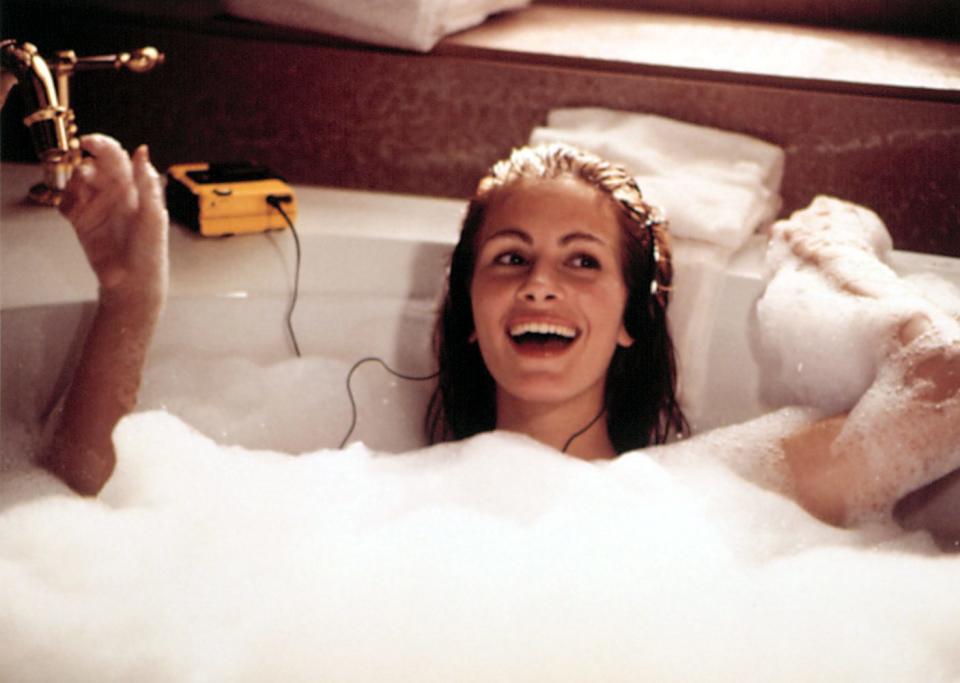
©Buena Vista Pictures/Courtesy Everett Collection
Among them, Roberts reigned supreme. Her work bookended the ’90s, as she also ended the decade with “Runaway Bride” in the late summer of 1999 (which, adorably enough, re-teamed her with both Marshall and her “Pretty Woman” co-star Richard Gere). In between, Roberts also starred in P.J. Hogan’s “My Best Friend’s Wedding” and Roger Michell’s “Notting Hill,” both prickly rom-coms that saw Roberts playing complex heroines.
Roberts is associated with her trademark giant smile and open-mouthed laugh — best exemplified by a charming scene in “Pretty Woman” that was actually the result of Gere playing a good-natured trick on her — but that buoyancy obscures deep reserves of human drama. “Pretty Woman” was first imagined as a dark drama, which is obvious in the quieter moments of Roberts’ performance, but painful edges are peeking out of her other ’90s hits as well.
In “Runaway Bride,” the headline-worthy gag about a small-town woman (Roberts) who has a panache for running away from the altar obscures a profound inner struggle as she turns to her paramours to hide her identity crisis. In “Notting Hill,” she’s a similarly adrift movie star (what a wild idea for a rom-com!). And in “My Best Friend’s Wedding,” Roberts’ Julianne has convinced herself she’s in love with her long-time best friend (Dermot Mulroney), to the point that she is ready to break up his wedding to his wonderfully ditzy partner (Cameron Diaz, a rom-com queen in her own right).
These are not healthy, happy stories, but Roberts’ inherent likeability binds them together. We love her tough characters because they’re unique to her appeal.
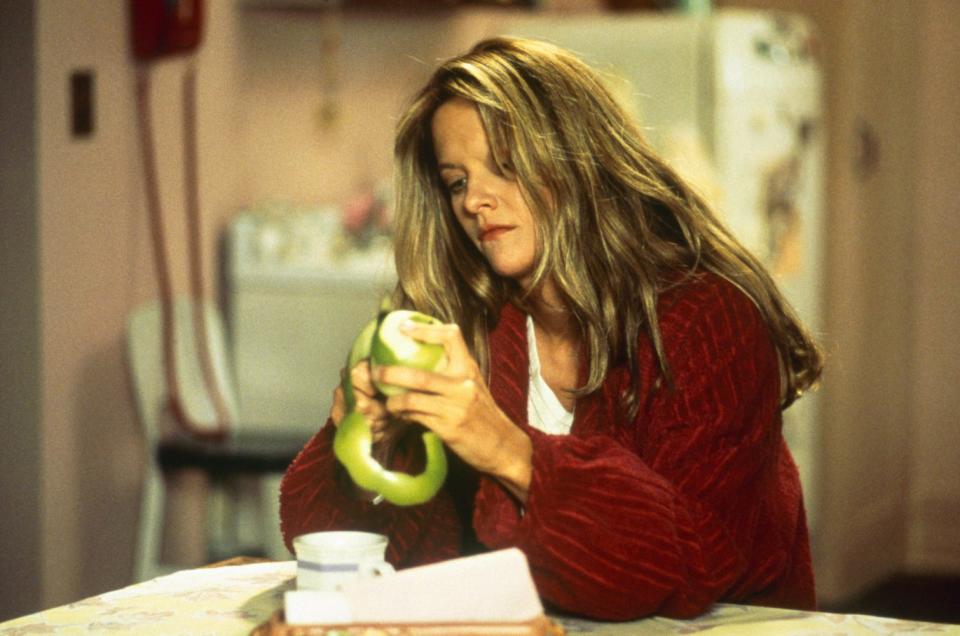
©TriStar Pictures/Courtesy Everett Collection
Meg Ryan pulled off a similar trick with her wide variety of iconic rom-com roles, with a twist: If the bubbly role was played by anyone else, the whole enterprise might crumble into an annoying mess. And yet Ryan so fully imbues her wackiest characters with humanity that we can’t help but root for them. Imagine anyone else playing the Annie Reed role in Nora Ephron’s seminal “Sleepless in Seattle” — a woman who obsesses over a man she’s never met, stalks him and his kid, travels across the country for just a glimpse of them, and throws over no less than Bill Pullman while doing it — and try to imagine still rooting for her. You can’t.
Like Roberts, some of Ryan’s best work happened when she was teamed with a familiar leading man. Roberts had Gere, and Ryan had Tom Hanks. But while Hanks’ performances in their trio of ’90s-era rom-coms often feel familiar — save for his “You’ve Got Mail” turn, in which he struggles to come across as a temporary cad — each Ryan performance is distinct from the rest. She even plays three different women in “Joe Versus the Volcano,” each its own iteration of a dream girl with her own worldview.
In “You’ve Got Mail,” the inevitable Ryan/Hanks romance might conclude the story, but within the rest of Ephron’s 1998 delight, Ryan also finds fresh facets for her Kathleen Kelly. The film is as much a story about a daughter, a friend, and a business owner as it is a woman who falls for an unexpected man over the connective magic of early AOL. Ryan is all of these woman in one, the rare on-screen leading lady who refuses to be defined by just one part (or one relationship) in her life.
Her non-Hanks work includes both unheralded winners (“French Kiss,” in which she’s matched with a hilariously fake French Kevin Kline) and massive busts (“Prelude to a Kiss,” icky even with Ryan giving it her all). She was even willing to get wacky — really wacky — alongside Matthew Broderick in Griffin Dunne’s “Addicted to Love,” the only film based on a Robert Palmer song that’s actually fun to watch. It’s Ryan’s special charisma, here lightly hidden under an uncharacteristically tough exterior, that makes the film such a romp. That’s her special sauce.
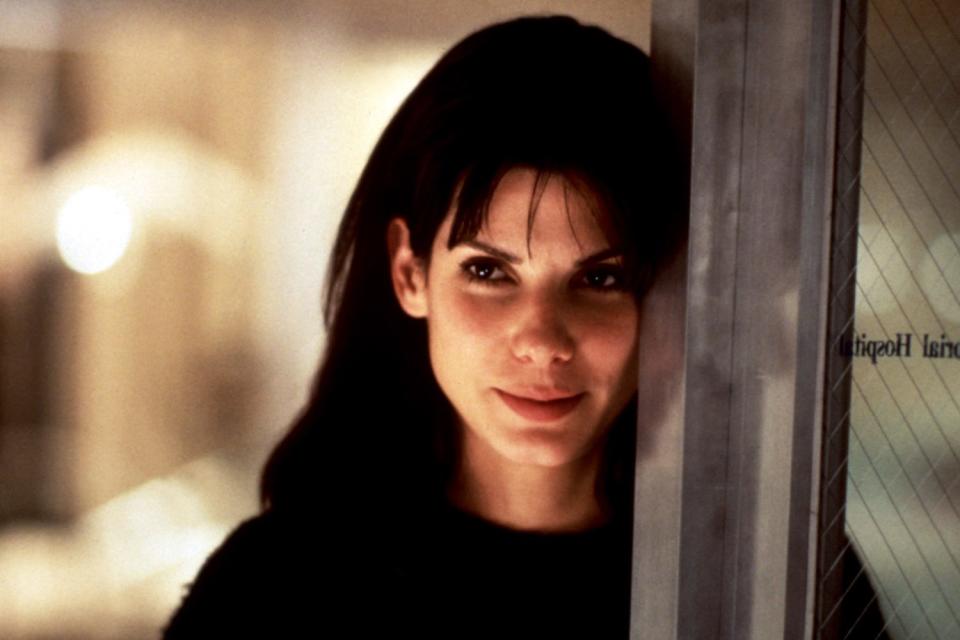
©Buena Vista Pictures/Courtesy Everett Collection
Elsewhere, a young Sandra Bullock broke out in “Love Potion No. 9” before turning to misfires that still showcased her abilities, like “Two If by Sea” and “Hope Floats” (truly not a rom-com, but a film that is at its best when trying to be lighter, mostly thanks to Bullock). Her primary contribution to ’90s-era rom-coms: Jon Turteltaub’s 1995 “While You Were Sleeping,” which gamely turned Bullock into the kind of sad-sack character traditionally reserved for male rom-com stars, and then managed to make her into the kind of person you can only root for.
The Oscar-winning Bullock is still making rom-coms today, including massive hits like “The Proposal” (again, taking on a typical male role and making it decidedly feminine) and “The Lost City” (a throwback to the rom-coms of the ’80s, like 1984’s “Romancing the Stone”). If anyone can reignite the studio rom-com boom of the ’90s in this current decade, Bullock is our best bet.
While many of the rom-coms most closely associated with the male stars of the ’90s owe plenty to their leading men, only Andie MacDowell was able to carve out her own place in films like “Four Weddings and a Funeral” and “Groundhog Day.” Both movies are usually remembered as vehicles for Hugh Grant and Bill Murray, respectively, but only one woman proved alluring enough to inspire them even during the most heightened of situations: MacDowell. (Other MacDowell also-rans: the mostly forgotten “The Muse,” and the sweet “Green Card”).
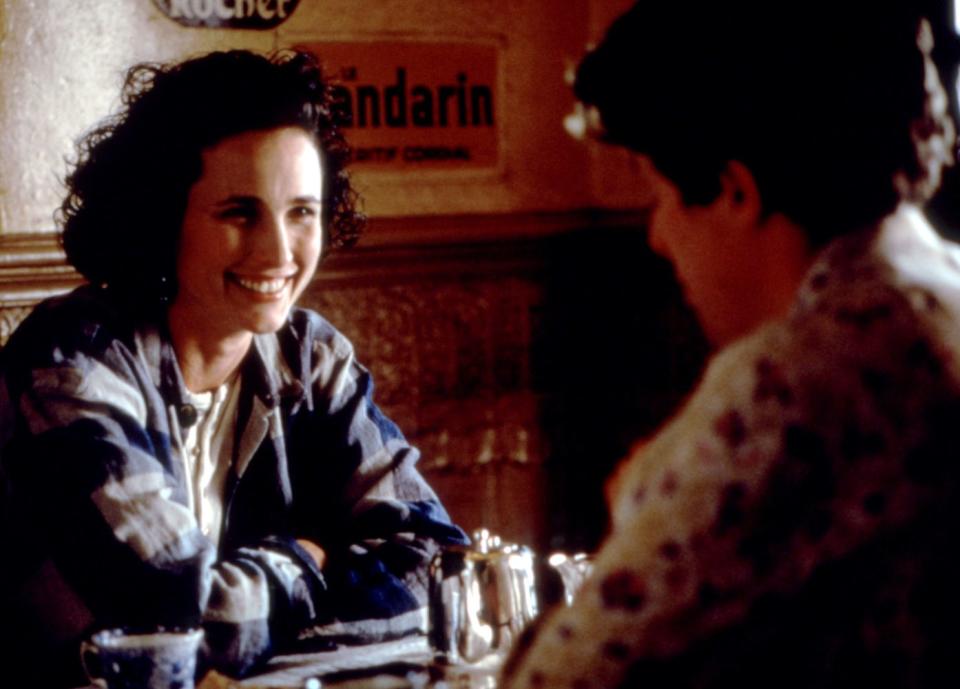
©GramercyPictures/Courtesy Everett Collection
MacDowell is often overlooked, but her reserved charm and understated nature provided ballast in several ’90s rom-com favorites. Like her contemporaries, MacDowell possessed a special charisma that was easy to fall in love with.
For all the aplomb of their stars, these movies came up short in one crucial way: They were all movies about white women at the center of heterosexual love stories. The ‘90s may have been ruled by its rom-com queens, but that status was only conferred on a handful of select women, nearly all of them white, nearly all of the stories straight. Hollywood may be making representational strides these days, but the ’90s came up short. Nevertheless, there were still several women of color and queer storytellers who got to shine bright in the rom-com space at this time, in particular Nia Long, Angela Bassett, Clea DuVall, and Natasha Lyonne (who, just like the rest of our rom-com queens, are still big names today, and working harder than ever).
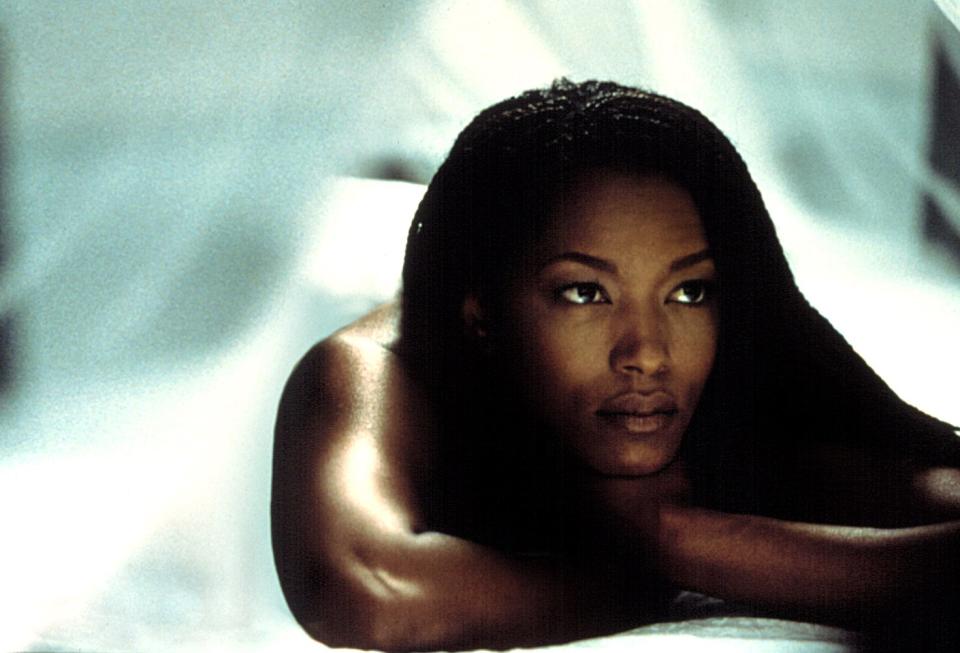
©20thCentFox/Courtesy Everett Collection
Combing through the ’90s rom-com annals unearths a number of more diverse options. While “The Best Man” (which featured Long, alongside other wonderful actresses like Regina Hall, Sanaa Lathan, Monica Calhoun, and Melissa De Sousa) is an ensemble piece and “Waiting to Exhale” (in which Bassett lights up her cheating husband’s car and all his belongings) trends a bit darker than the frothy genre’s standards, both actresses exhibit the hallmarks of rom-com stars.
Long also dominates Theodore Witcher’s steamy “Love Jones,” cast opposite Larenz Tate in a romantic drama with plenty of humorous insights into the nature of modern love. And Bassett, one of our most versatile performers, turned in an absolute gem of a performance in 1998’s “How Stella Got Her Groove Back,” slipping into the eponymous character with ease and charm, with a sexy spin on “Eat, Pray, Love” before anyone had so much as dreamed up those terms. In the annals of ’90s rom-coms, Bassett’s work in the film (and the film itself) deserves a place at the highest echelons of the genre (and it’s sexier than a lot of them).
No discussion about the female stars of ’90s rom-coms would even be complete without mention of Jamie Babbit’s satirical gem “But I’m a Cheerleader,” which features iconic work from both Natasha Lyonne (as said cheerleader) and Clea DuVall as young lesbians sent to a gay conversion camp where they, inevitably, fall in love. The film remains a classic of the genre, an outlier in Hollywood, and a sterling example of why Lyonne and DuVall remain such bright lights on the big screen. (DuVall, now also a director, recently directed the 2020 queer Christmas rom-com “Happiest Season,” a hit on Hulu and proof that things are changing for the better.)
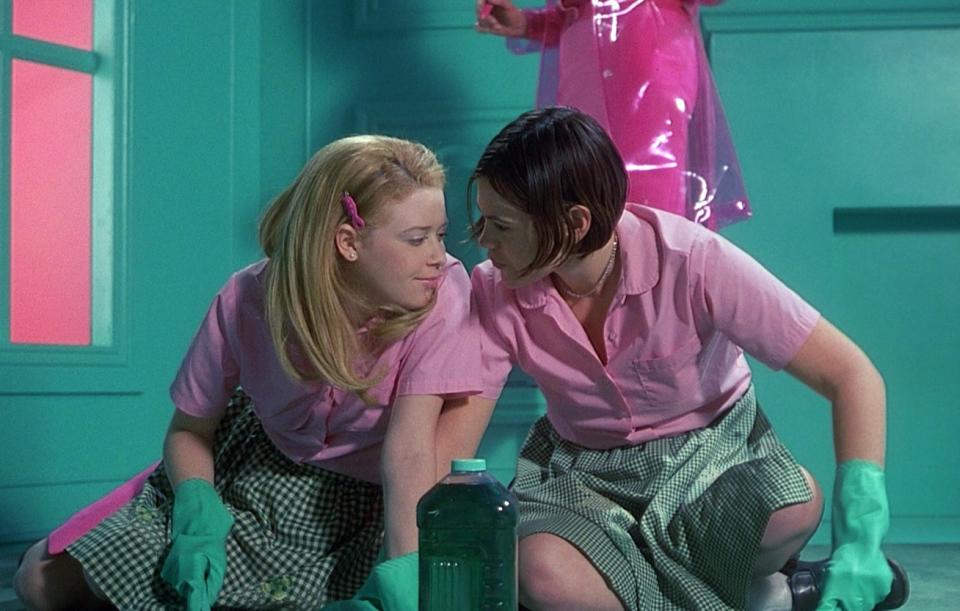
©Lions Gate/Courtesy Everett Collection
Aside from the genre’s most recognized queens, a wide variety of other films were made iconic by the strength of their leading ladies. Consider the comedic chops of everyone from Goldie Hawn (bringing her classic physical gags to “Bird on a Wire”) to Robin Givens (“Boomerang” doesn’t work without her).
Other funny women made old stories new with the force of their charisma and strong performances, including the Shakespearan riffs from Emma Thompson in “Much Ado About Nothing” and Julia Stiles in “10 Things I Hate About You”; Rachael Leigh Cook charmed in the Pygmalion-inspired “She’s All That”; the contemporary Cyrano tale “The Truth About Cats & Dogs” that boasted both Janeane Garafolo and Uma Thurman; and dueling Jane Austen’s “Emma,” with both Gwyneth Paltrow in “Emma” and Alicia Silverstone in “Clueless” turning in delightful performances.
Somewhat darker rom-coms were also bolstered by their leading ladies, including turns from our most beloved performers. This was a decade that included a Meryl Streep rom-com (“Defending Your Life”), an Annette Bening rom-com (“The American President”), a Renee Zellweger rom-com (“Jerry Maguire”), and introduced us to the wily power of Toni Collette (“Muriel’s Wedding”) and the technicolor delight of Juliette Binoche (“Sabrina”). In love stories of every kind, all of which required heart and humor, they excelled.
Or, as Vivian might have said at the end of “Pretty Woman,” they rescued the genre right back.
This article was published as part of IndieWire’s ’90s Week spectacular. Visit our ’90s Week page for more.
Best of IndieWire
New Movies: Release Calendar for August 19, Plus Where to Watch the Latest Films
From 'Barbie' to 'Babylon,' Here's Everything Margot Robbie Has in the Works
All the Details on 'Hunger Games' Prequel 'The Ballad of Songbirds and Snakes'
Sign up for Indiewire's Newsletter. For the latest news, follow us on Facebook, Twitter, and Instagram.

